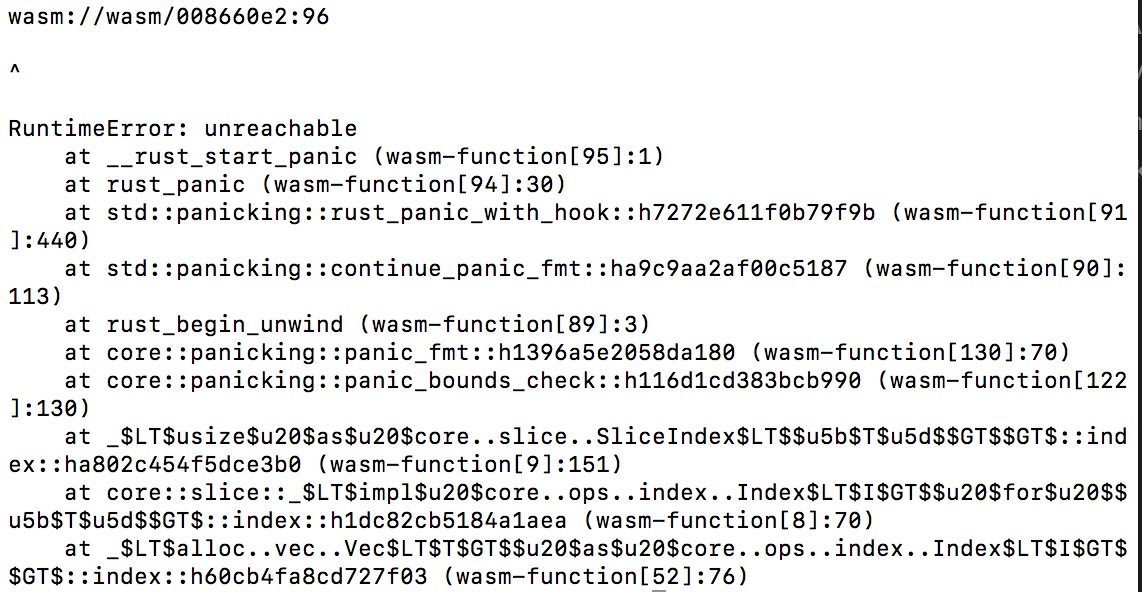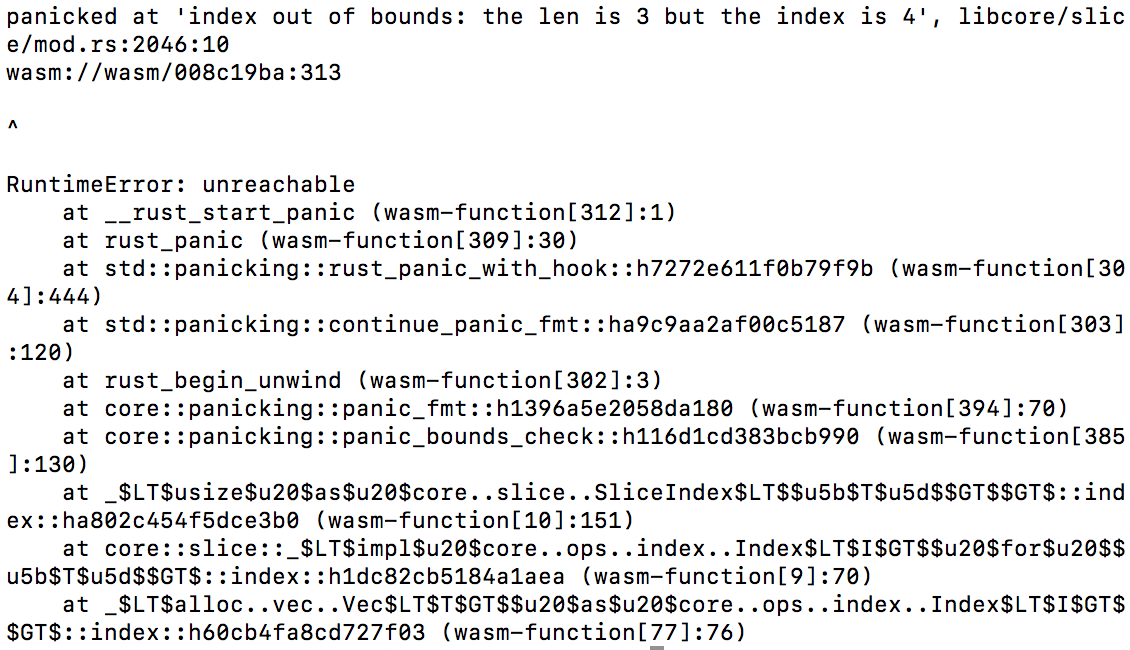## `console_error_panic_hook`
[](https://docs.rs/console_error_panic_hook/)
[](https://crates.io/crates/console_error_panic_hook)
[](https://crates.io/crates/console_error_panic_hook)
[](https://travis-ci.org/rustwasm/console_error_panic_hook)
This crate lets you debug panics on `wasm32-unknown-unknown` by providing a
panic hook that forwards panic messages to
[`console.error`](https://developer.mozilla.org/en-US/docs/Web/API/Console/error).
When an error is reported with `console.error`, browser devtools and node.js
will typically capture a stack trace and display it with the logged error
message.
Without `console_error_panic_hook` you just get something like *RuntimeError: Unreachable executed*
Browser:

Node:

With this panic hook installed you will see the panic message
Browser:

Node:

### Usage
There are two ways to install this panic hook.
First, you can set the hook yourself by calling `std::panic::set_hook` in
some initialization function:
```rust
extern crate console_error_panic_hook;
use std::panic;
fn my_init_function() {
panic::set_hook(Box::new(console_error_panic_hook::hook));
// ...
}
```
Alternatively, use `set_once` on some common code path to ensure that
`set_hook` is called, but only the one time. Under the hood, this uses
`std::sync::Once`.
```rust
extern crate console_error_panic_hook;
struct MyBigThing;
impl MyBigThing {
pub fn new() -> MyBigThing {
console_error_panic_hook::set_once();
MyBigThing
}
}
```
### Error.stackTraceLimit
Many browsers only capture the top 10 frames of a stack trace. In rust programs this is less likely to be enough. To see more frames, you can set the non-standard value `Error.stackTraceLimit`. For more information see the [MDN Web Docs](https://developer.mozilla.org/en-US/docs/Web/JavaScript/Microsoft_Extensions/Error.stackTraceLimit) or [v8 docs](https://v8.dev/docs/stack-trace-api).